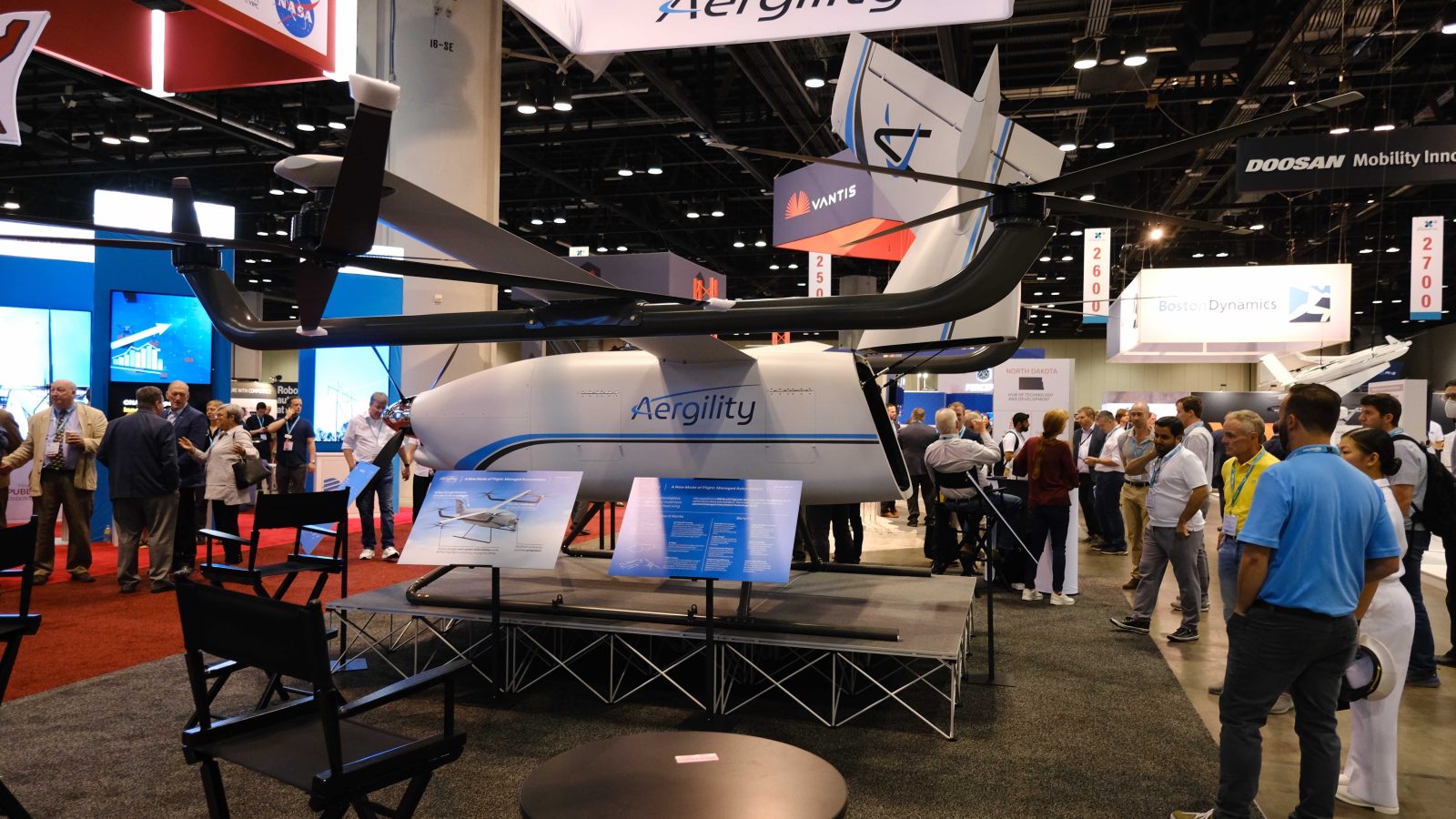
On the crowded floor of the AUVSI XPONENTIAL conference – the biggest drone show in the world – it takes something pretty unusual to stop you in your tracks. But literally three minutes after getting on the exhibition floor, I kinda had to stop in my tracks and check out the Aergility ATLIS. You’ll soon see why.
The ATLIS is billed as a long-range, heavy lift VTOL cargo UAV; its manufacturer claims it will be able to carry 500 pounds over 300 miles. That’s a serious amount of cargo. But this VTOL-style fixed-wing craft has an unusual design feature that sets it apart from the crowd, utilizing the principle of a gyrocopter for lift while in forward flight.
How does it do that?
At their simplest, a gyrocopter has a blade similar to a helicopter blade – except it is not attached to a motor. Thrust is from a pusher or puller prop that pulls the vehicle forward on the ground. As airflow moves over the chopper-style blade, it begins to autorotate, and that autorotation produces lift – very much like a wing.
The ATLIS has a total of seven propellors. A multiple turboprop on the front supplies propulsion. Check out the business end, right here:

So that motor provides forward thrust. But unlike a traditional gyrocopter, which requires forward movement on the ground to get those overhead blades auto-rotating, the ATLIS uses electrical power to gain lift from six large blades powered by electrical motors. Once it’s in the air, the multi-fuel motor (what you see above), kicks in for forward flight.
For takeoff, a minimal number of batteries power the rotors to lift ATLIS off the ground. Managed Autorotation Technology (MAT) allows us to achieve transitionless flight from hover to forward flight, with battery power tapering to zero. The tractor propellor provides propulsion, and lift is efficiently managed by a small-chord wing and fixed-pitch rotors in managed autorotation.
Aergility
There’s more. For flight control, the ATLIS has a new trick up its sleeve. Just like Tesla uses regenerative brakes, the ATLIS can slow down autogyros on one side. This generates power, which is applied to the autogyros on the other side. In this way, roll can be achieved.
Here’s a look at one of those autogyros that doubles as a VTOL motor, followed by a more complete explanation of how this thing flies:

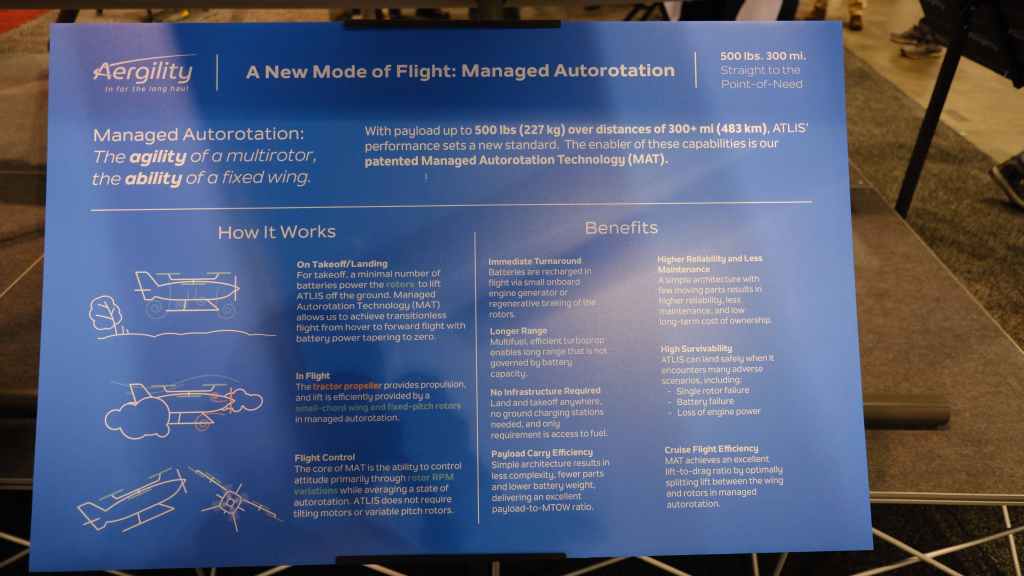
Cargo and range
In addition to its VTOL capabilities, the ATLIS promises significant cargo handling and range.
“We want to be in places that have limited, damaged infrastructure or unavailable infrastructure,” explained Brian Vander Mey, Aergility’s Director of Sales and Marketing. “That would be anything from 400,000 villages in Africa, to oil platforms, or even military applications where it costs $1000/litre to deliver water into the field.”
Here’s a look at the back end, which tilts open much like a military cargo aircraft:
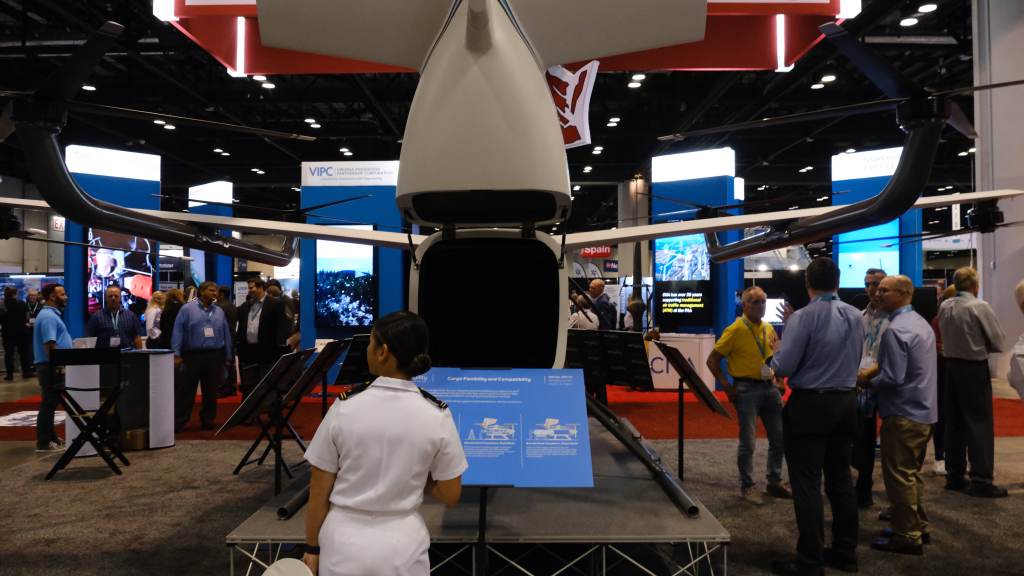
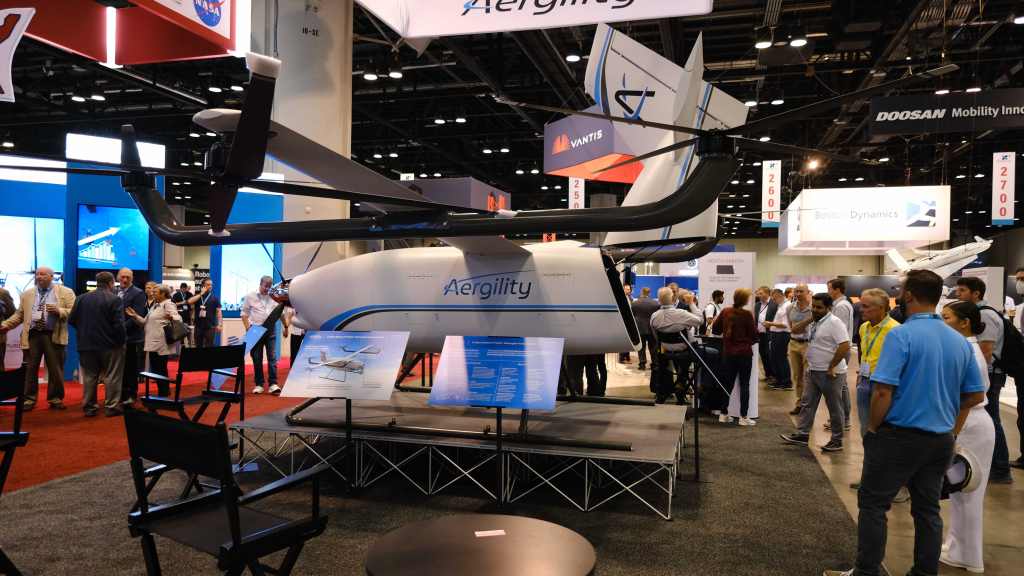
But will it fly?
The model on the floor isn’t quite ready for prime time. However, this is the actual bird that will start test flights by the end of the summer. Aergility has made previous scale models and proven the concept.
“We flew our first 1:4 scale model four years ago,” says Vander Mey. “Then we built a 30 per cent scale model, and this is the debut of our full-scale model. This is our third generation.”
The ATLIS was generating a lot of interest on the floor, particularly from members of the military and humanitarian organizations. Vander Mey says the aircraft must still go through the complex FAA certification process, but predicts ATLIS will be available for purchase in about 24 months.
Wait, there’s more!
Due to seminars, we only managed to cover a small bit of the floor today. However, we grabbed a few pictures you might enjoy:

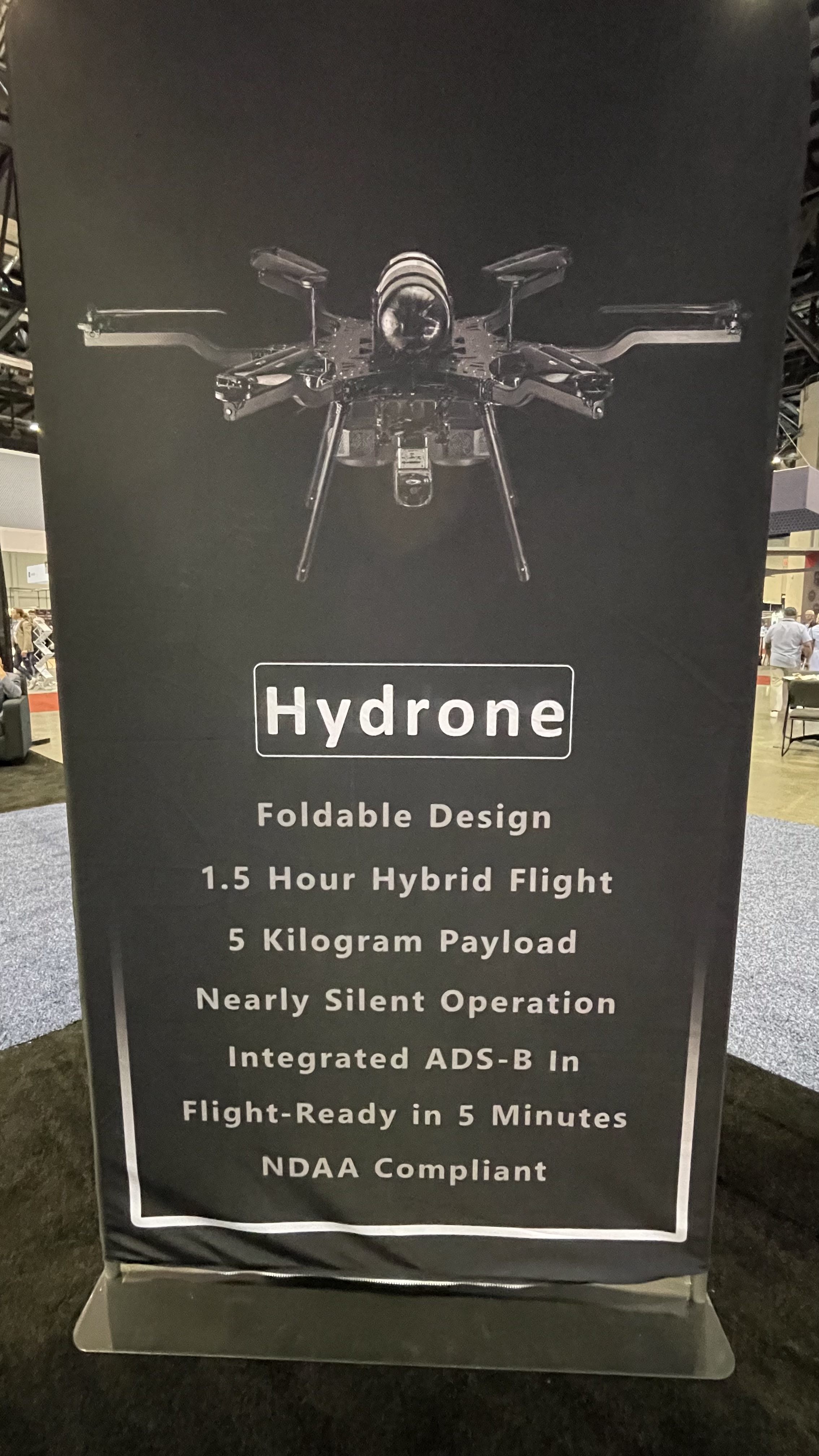
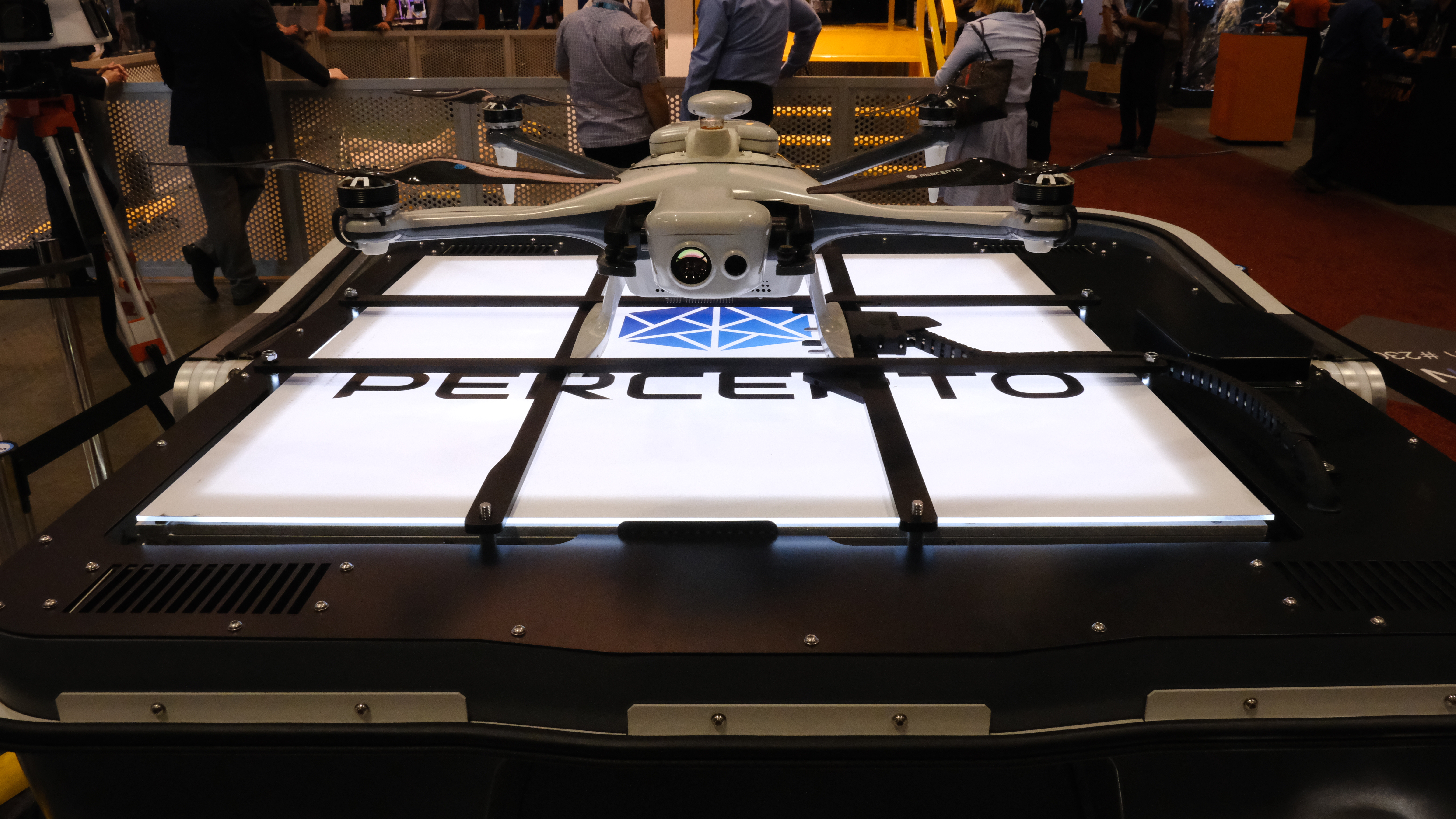
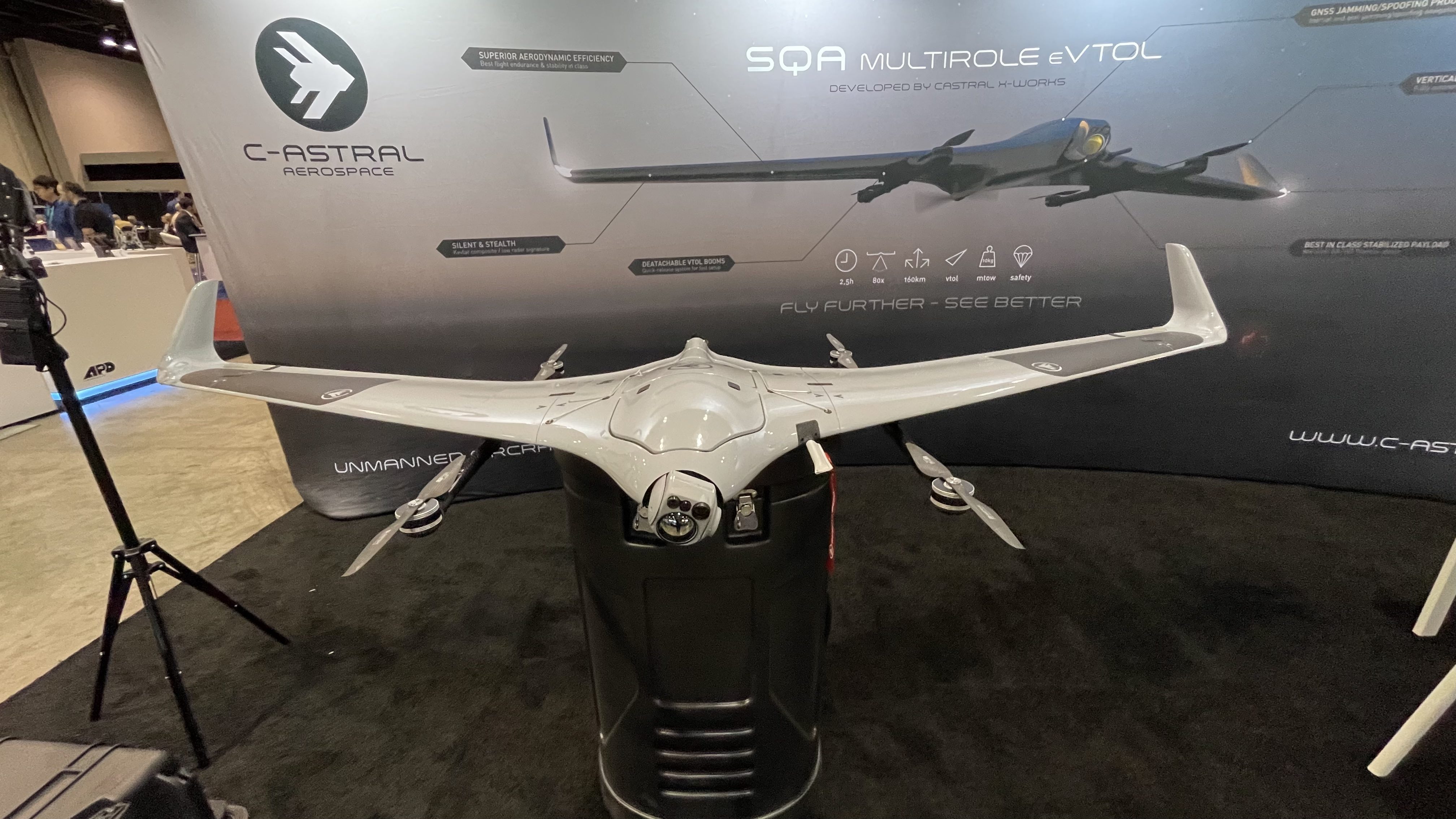
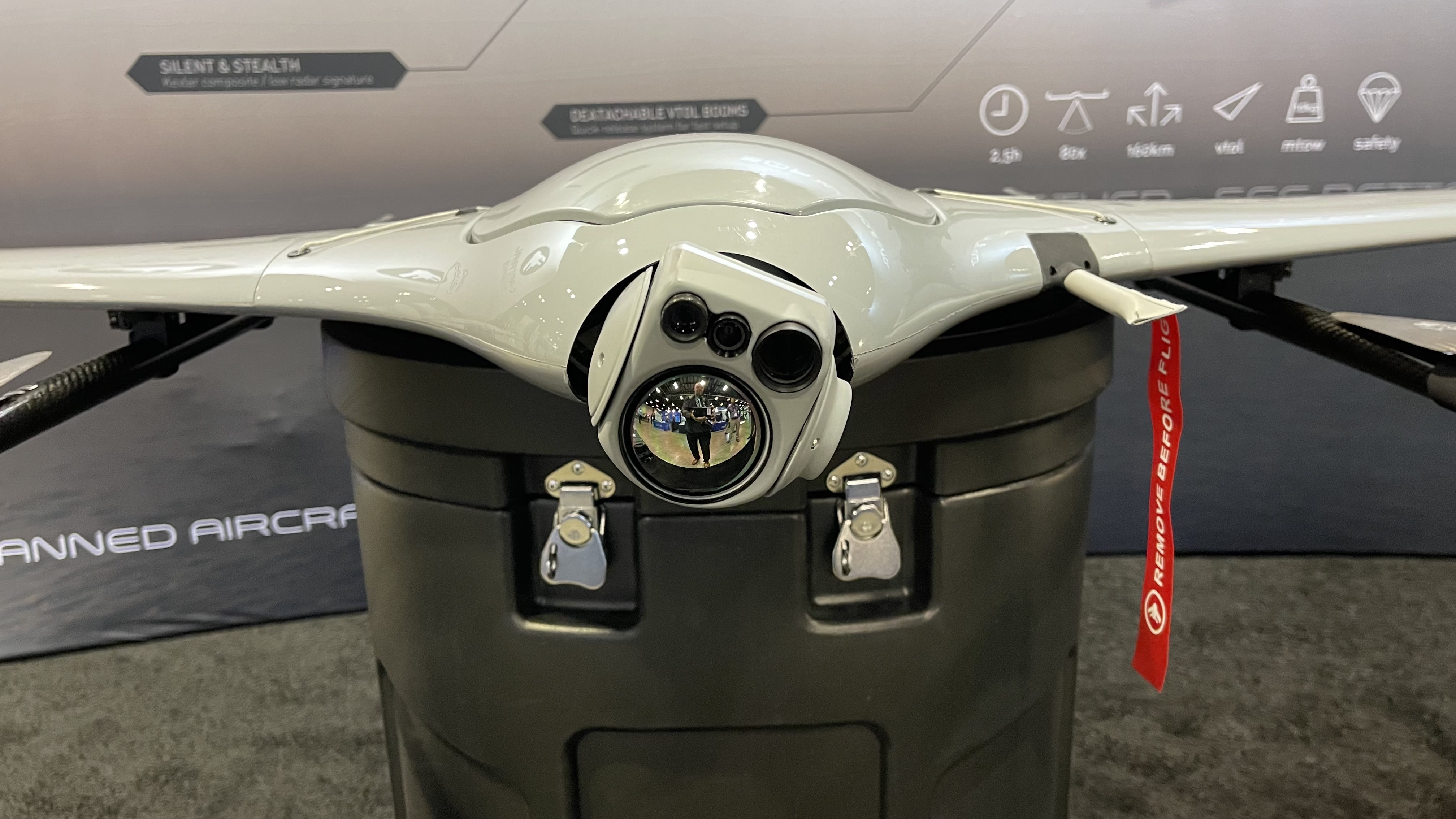
FTC: We use income earning auto affiliate links. More.





Comments